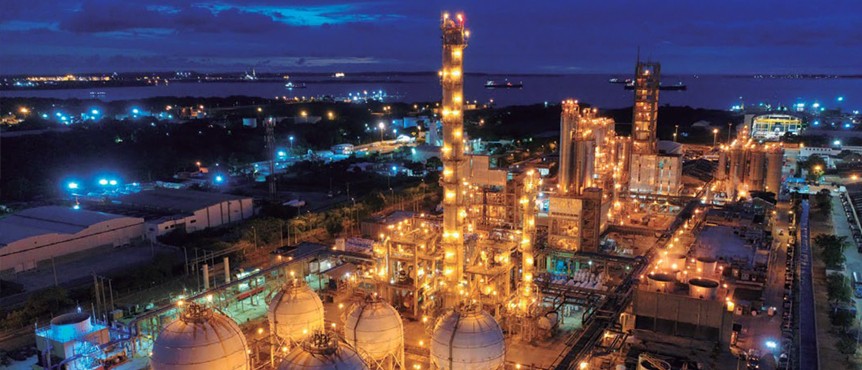

IMAGE: Courtesy of ESSENTIA
Shortly after starting his presidential mandate, in August 2018 Iván Duque joined private sector leaders in Cartagena at a gathering of the National Association of Entrepreneurs (ANDI). The good vibe of the meeting resulted in a tacit agreement that both the public and the private sector should work together to improve economic growth rates, which had been disappointing for the previous two years. In 2017, GDP growth was just 1.8%, and the objective is to reach a 4% annual rate.
Colombia is Latin America’s fourth largest economy with a GDP worth US$309.2 billion (IMF, 2017 data). GDP per capita in US dollar terms is not high at US$6,273; it sits below Argentina, Brazil, Chile and even Peru, so there is great potential to continue promoting the expansion of the middle class in the country – which in turn will push up demand for chemicals and plastic products.
“I think the results of the recent election will have a favorable impact on the industry, and we should also see an increase of Ecopetrol’s E&P activity”, affirmed Rina Quijada, vice president Latin America at IHS Markit. “On the demand side, as long as there is economic growth, there will be demand growth for petrochemical products. President Iván Duque will have to generate political and economic stability and this should support the development of the industry,” she continued.
Indeed, Iván Duque’s administration wants to simplify the tax framework to make it easier for business owners and entrepreneurs to conduct activities within the formal economy. Optimism is already translating into higher levels of trade and investment, said Daniel Mitchell, president of industry association Acoplásticos: “2017 was not a great year as consumption growth was flat, but this year we have seen good recovery rates from the second quarter, and also Iván Duque’s policies are aligned with an improvement of competitiveness. As a result, companies are investing to expand capacity across the value chain.”
Mitchell provided some figures that illustrate how the Colombian market for petrochemical products still has great potential for growth: “In Colombia, we consume 28 kg of plastics per person per year – versus 35 kg in Brazil, 43 kg in Mexico, 45 kg in Argentina, 50 kg in Chile and 150 kg in the US.”
According to Acoplasticos, the main players in Colombia’s petrochemicals industry are Essentia (formerly Propilco) with an installed capacity of 500,000 tonnes per year (mt/y) of polypropylene; Mexichem, with a production of around 482,000 mt/y of PVC; Americas Styrenics (AmSty) and Ajover Group, with a combined capacity of 110,000 mt/y in polystyrene; and Ecopetrol, that produces around 66,000 mt/y of low density polyethylene. Meanwhile, the country has a capacity of around 60,000 mt/y in recycled PET, and 60,000 mt/y in unsaturated polystyrene resins.
With a population of 49.3 million, significant oil and gas resources and a market-friendly administration, Colombia will definitely be a market to watch in the immediate future.

IMAGE: Courtesy of ESSENTIA
Shortly after starting his presidential mandate, in August 2018 Iván Duque joined private sector leaders in Cartagena at a gathering of the National Association of Entrepreneurs (ANDI). The good vibe of the meeting resulted in a tacit agreement that both the public and the private sector should work together to improve economic growth rates, which had been disappointing for the previous two years. In 2017, GDP growth was just 1.8%, and the objective is to reach a 4% annual rate.
Colombia is Latin America’s fourth largest economy with a GDP worth US$309.2 billion (IMF, 2017 data). GDP per capita in US dollar terms is not high at US$6,273; it sits below Argentina, Brazil, Chile and even Peru, so there is great potential to continue promoting the expansion of the middle class in the country – which in turn will push up demand for chemicals and plastic products.
“I think the results of the recent election will have a favorable impact on the industry, and we should also see an increase of Ecopetrol’s E&P activity”, affirmed Rina Quijada, vice president Latin America at IHS Markit. “On the demand side, as long as there is economic growth, there will be demand growth for petrochemical products. President Iván Duque will have to generate political and economic stability and this should support the development of the industry,” she continued.
Indeed, Iván Duque’s administration wants to simplify the tax framework to make it easier for business owners and entrepreneurs to conduct activities within the formal economy. Optimism is already translating into higher levels of trade and investment, said Daniel Mitchell, president of industry association Acoplásticos: “2017 was not a great year as consumption growth was flat, but this year we have seen good recovery rates from the second quarter, and also Iván Duque’s policies are aligned with an improvement of competitiveness. As a result, companies are investing to expand capacity across the value chain.”
Mitchell provided some figures that illustrate how the Colombian market for petrochemical products still has great potential for growth: “In Colombia, we consume 28 kg of plastics per person per year – versus 35 kg in Brazil, 43 kg in Mexico, 45 kg in Argentina, 50 kg in Chile and 150 kg in the US.”
According to Acoplasticos, the main players in Colombia’s petrochemicals industry are Essentia (formerly Propilco) with an installed capacity of 500,000 tonnes per year (mt/y) of polypropylene; Mexichem, with a production of around 482,000 mt/y of PVC; Americas Styrenics (AmSty) and Ajover Group, with a combined capacity of 110,000 mt/y in polystyrene; and Ecopetrol, that produces around 66,000 mt/y of low density polyethylene. Meanwhile, the country has a capacity of around 60,000 mt/y in recycled PET, and 60,000 mt/y in unsaturated polystyrene resins.
With a population of 49.3 million, significant oil and gas resources and a market-friendly administration, Colombia will definitely be a market to watch in the immediate future.